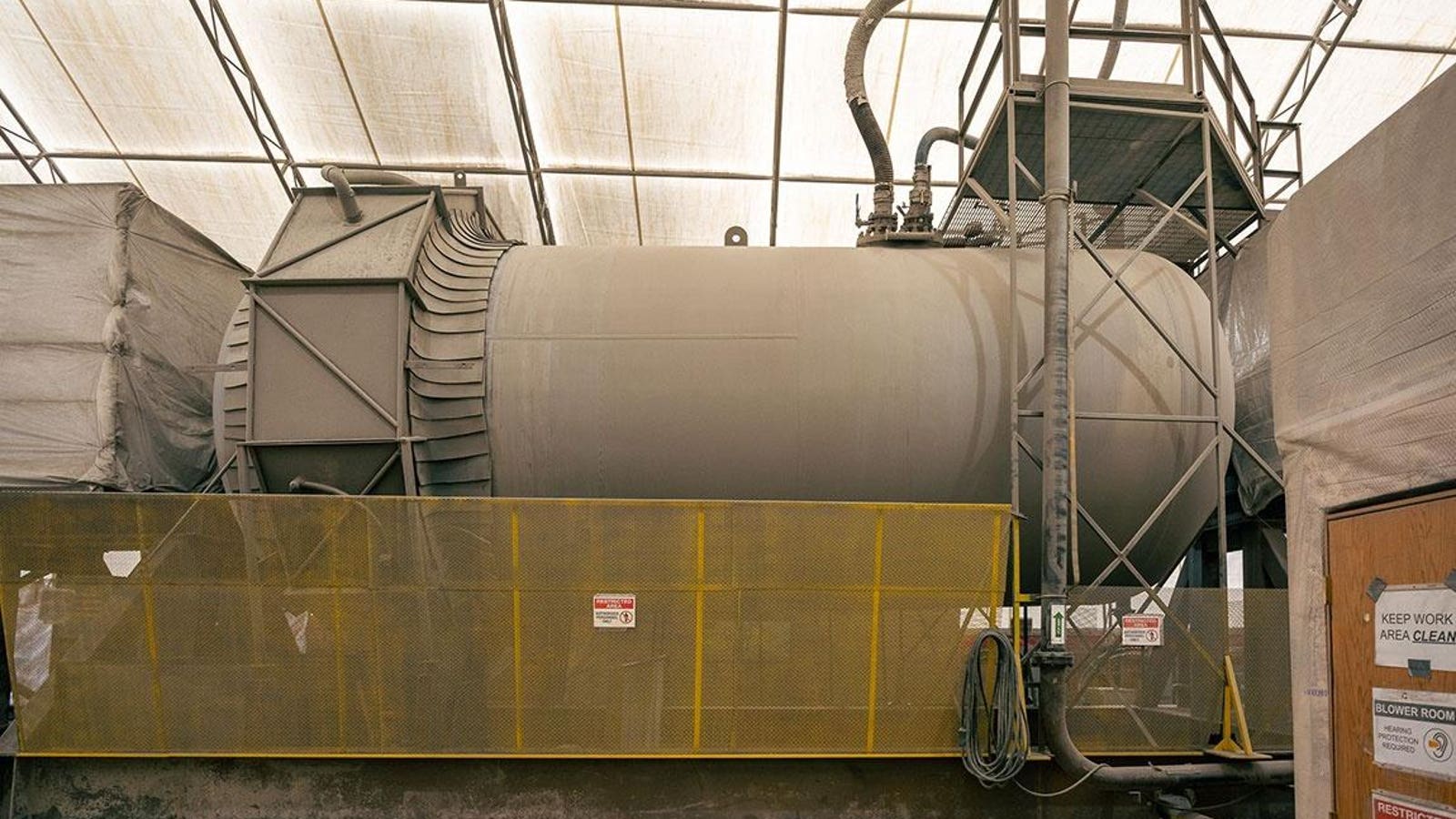New Technology Companies Are Tackling The Emissions In Cement
Share to FacebookShare to TwitterShare to LinkedinConstruction has historically been viewed as an unavoidably high emissions industry, with cement production contributing about 8% of global emissions. This problem is challenging to solve because you can’t simply electrify it. This is because the breakdown of limestone into cement also releases CO2 as a byproduct. Carbon Upcycling is one of the companies working through the steps required to develop low-emissions cement, and they highlighted their solution at Energy Disruptors this week in Calgary. Their approach captures CO2 emissions, and combines it with waste byproducts from other industries, such as steel, mining, and energy, to create critical materials like cement.
Carbon Upcycling has operated its commercial demonstration facility in Western Canada since 2021, providing low-carbon cement products for housing foundations, roads, and pathways. They are also deploying their commercial system at one of Canada’s largest cement plants. The company helps remove emissions in two ways. Their enhanced materials cut cement emissions, and to produce these materials, they capture carbon. This process turns industrial byproducts into “sponges” to absorb CO2. This prepares the material for use in cement while also accelerating the natural process of carbon mineralization. Accelerating is an understatement as this process often takes years, and they aim to do it in hours. Carbon mineralization is the transformation of CO2 into solid carbonate rock.
Carbon mineralization is familiar, but many competing solutions require capturing and concentrating the CO2, then transporting and pumping it underground to mineralize. Carbon Upcycling aims to capture CO2 directly from flue gas ‘as is,’ capturing CO2 at concentrations ranging from 4% to 99% and doing it all at the emissions source. Whether or not Carbon Upcycling wins this part of the market remains to be seen. Still, given how they’ve inserted themselves in the supply chain versus other entities, they have interesting economic tailwinds. For example, the concentration flexibility outlined above is a potential real advantage. Working within a range requires slightly less monitoring and fewer additional steps than companies capturing exclusively for credits. This is because sellers need to know if they captured 10% CO2 or 50% CO2, as one of those could result in buyers drastically overpaying for credits.
“Unlike most CCUS technologies that require concentrated CO2 sources (at least 60%), our process can mineralize CO2 without pre-treatment, utilizing CO2 ‘as is’ from concentrations ranging from 4% to 99%,” said Apoorv Sinha, CEO of Carbon Upcycling.
Avoiding transport and storage also reduces the capital outlay and the additional parties required for a project, likely accelerating deployment. This approach has proved smart when you think about the cement supply chain. “Decarbonizing the global cement industry paradoxically requires a hyper-local approach due to the inherently local nature of its supply chains. Cement plants are strategically located near mountains for limestone, near other industries, and close to transportation hubs to distribute their products”, said Apoorv.
This local solution is also helpful when considering all the countries and regions hesitant to store carbon underground due to high transport costs or uncertain geology. With a robust and broad oil and gas industry that has mapped the geology within existing regulatory regimes, it is easy to take this for granted in North America.
MORE FOR YOUToday’s NYT Mini Crossword Clues And Answers For Thursday, October 3NYT ‘Strands’ Today: Hints, Spangram And Answers For Thursday, October 3rdFederal Judge Halts California’s New Anti-Deepfakes Law—Musk Says Its ‘Score One’ For Free Speech “Cement is a hub-and-spoke model, where ~2,600 cement plants provide hundreds of thousands of concrete facilities around the world with cement. By integrating our technology at cement plants, we can address emissions at the source before they leak into the downstream market, a significant differentiator when ~90% of concrete’s emissions are from cement. Our ability to integrate at the cement plant is due to our mineralization process which produces a dry product, unlike other technologies that work at concrete plants and require trucking in and injecting CO2 into an aqueous mix,” said Apoorv.
One of the other advantages of Carbon Upcycling is that its system is designed to run entirely electric and can switch on and off based on the carbon intensity of the power used. This is better for the environment but historically very difficult with legacy machinery or industrial processes, as it hurts runtime and starting up often requires more power. “We believe that we shouldn’t be trading an emissions problem for an energy one, so we’ve designed our system to be all-electric and capable of switching on and off within minutes,” said Apoorv.
Carbon Upcycling is one of the many companies that have arrived in recent years, focusing on hard-to-abate industries. “Cement is like the glue in concrete and is really the basis of modern society. It is in our cities, our communities, and our homes and will be the foundation for critical infrastructure like data centres and renewables. The problem is the industry accounts for 8% of global emissions – a number that will only continue to grow as demand for building materials is set to double by 2060. The equivalent of building one New York City every month,” said Apoorv.
Carbon Upcycling was founded in 2014 in response to the Alberta government’s Carbon Grand Challenge, which sought innovative solutions to convert industrial carbon emissions into valuable products. Since then, the company has attracted a syndicate of strategic investors, including BDC, Climate Investment, Oxy, and Clean Energy Ventures. They also have three of the top 20 largest cement producers as investors: CRH, Cemex, and Titan Cement. This connection to industry provides a potential path to scale their technology.
Follow me on LinkedIn. Check out my website.












 Bitcoin
Bitcoin  Ethereum
Ethereum  Tether
Tether  XRP
XRP  USDC
USDC  Wrapped SOL
Wrapped SOL  TRON
TRON  Lido Staked Ether
Lido Staked Ether  Dogecoin
Dogecoin